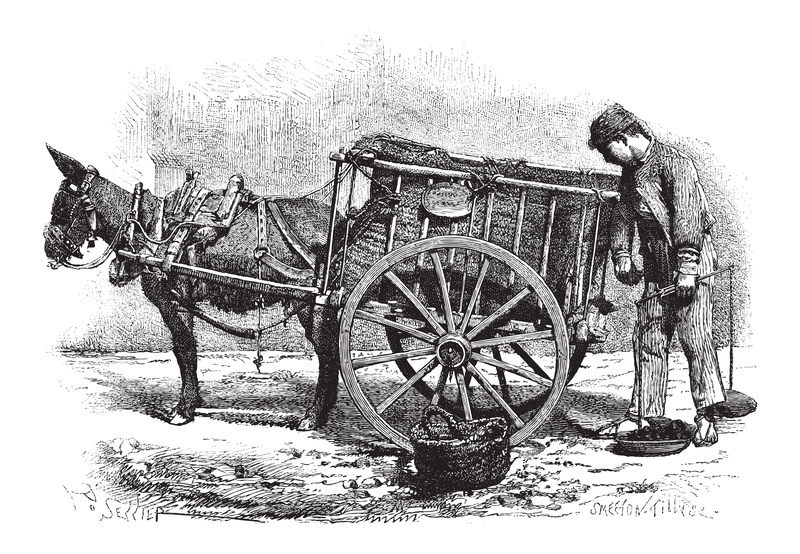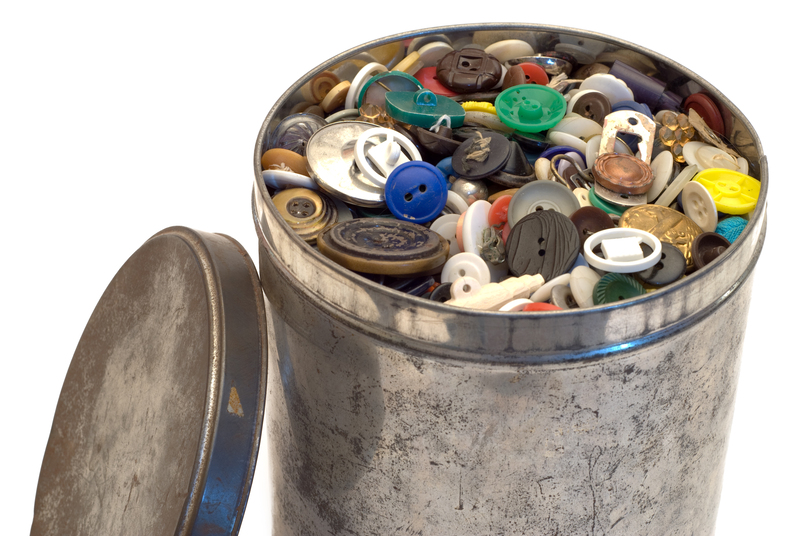The Battle Plan Against Persistent Microplastic Threats
Microplastics have infiltrated every corner of our planet, from the deepest oceanic trenches to the highest mountain peaks. These tiny plastic particles--less than 5mm in size--pose a severe and growing threat to ecosystems, wildlife, and human health. To counteract these risks, a robust and multifaceted approach is essential. In this comprehensive guide, we'll delve into the origins of microplastics, examine their far-reaching impacts, and outline strategic solutions--the ultimate battle plan against persistent microplastic threats.
Understanding Persistent Microplastic Threats
What Are Microplastics?
Microplastics are tiny fragments, beads, or fibers of plastic that result from the breakdown of larger plastic debris or are manufactured intentionally for consumer products. Common sources include synthetic clothing fibers, cosmetic exfoliants, tire wear particles, and degraded packaging materials.
- Primary microplastics - manufactured small (e.g., microbeads in scrubs, nurdles used in plastic production)
- Secondary microplastics - result from the breakdown of larger plastic items due to environmental exposure
How Do Microplastics Persist?
One of the most insidious aspects of microplastics is their persistence. These plastic particles do not biodegrade naturally; instead, they fragment into progressively smaller particles, remaining in the environment for centuries. Their resilient nature allows them to accumulate and spread via wind, water, and food chains, forming a persistent environmental threat.

Impacts of Microplastic Pollution
Environmental Consequences
Microplastics are found in every major ecosystem, including oceans, rivers, soils, and even the atmosphere. Their ubiquitous presence has several dire effects:
- Ocean life: Organisms ingest microplastics, leading to physical blockages, malnutrition, and toxic impacts throughout marine food webs.
- Terrestrial ecosystems: Agricultural soils are polluted via sewage sludge and waste, threatening soil biodiversity and crop productivity.
- Atmospheric dispersal: Recent studies have detected tiny plastic fragments in rainwater and airborne dust, contributing to global distribution.
Human Health Risks
Emerging research identifies multiple pathways for microplastics to enter the human body: through food, water, and air. Potential health threats include:
- Chronic inflammation caused by ingested plastic debris
- Endocrine disruption from chemicals leaching out of plastics
- Possible links to cancer and developmental disorders (research is ongoing)
Origins of Persistent Microplastic Threats
Major Sources of Microplastic Pollution
The spread of microplastics stems from several dominant sources, each requiring specific mitigation strategies:
- Consumer products: Exfoliating microbeads in personal care items, glitter, and cleaning agents
- Textile fibers: Synthetic clothing releases fibers during washing
- Tire wear: Road traffic abrasion results in fine plastic dust
- Plastic packaging: Breaks down under sunlight, mechanical stress, and weathering
- Industrial losses: Plastic resin pellets lost during transport and processing
Global Hotspots
Certain regions serve as hotspots for microplastic pollution. Coastal zones, urban rivers, wastewater outlets, and agricultural lands fertilized with sludge are frequently identified as microplastic-rich environments.
Building the Battle Plan: Strategies to Counter Microplastic Threats
Scientific Research & Monitoring
A successful battle plan begins with robust research and monitoring. Ongoing efforts aim to:
- Map microplastic distribution globally through water, soil, and air sampling
- Identify sources and hotspots to prioritize interventions
- Develop sensitive detection methods to measure even the smallest particles
International collaborations between scientists, governments, and non-governmental organizations are key to data collection and strategy development.
Reducing Supply: Policy & Legislation
Major progress has been achieved through regulation. Countries and multinational bodies are:
- Banning or restricting microbeads in cosmetics and cleaning products
- Limiting single-use plastics and mandating producer responsibility schemes
- Enforcing strict pellet-handling protocols in manufacturing sectors
Policies also target plastic waste management, incentivizing recycling, and promoting alternatives to conventional plastics.
Innovations in Waste Management
A cornerstone of the fight against persistent microplastic threats is improved waste management technologies:
- Wastewater treatment upgrades - Installing advanced filtration systems to capture microplastics before water is discharged into nature
- New biodegradable materials - Adopt plant-based plastics and compostables where feasible
- Enhancing recycling infrastructure to keep plastics out of landfills and incinerators
Industrial Responsibility and Design Innovations
- Encouraging eco-design principles to minimize fiber shedding and eliminate unnecessary plastic components
- Utilizing closed-loop production systems to recover and reuse plastic byproducts
- Collaboration with retailers to reduce packaging and improve product labeling
Industrial leadership is essential for tackling plastic loss at the source.
Breaking the Microplastic Cycle: Community and Individual Actions
Reducing Reliance on Plastics
Every individual plays a role in the collective battle plan:
- Avoid single-use plastics such as straws, bags, and bottles
- Choose clothing made from natural fibers like cotton, wool, and linen
- Support brands committed to sustainable and plastic-free packaging
Conscious consumer choices can significantly limit the introduction of new microplastics to the environment.
Improving Domestic Habits
Households can adopt these practices to curb microplastic emissions:
- Install washing machine filters to capture synthetic fibers
- Recycle plastic waste responsibly
- Avoid personal care products with microbeads
- Participate in local clean-ups to remove visible plastic waste before it degrades into microplastics
Global Collaboration in the War Against Microplastics
International Agreements and Initiatives
The United Nations and global NGOs are spearheading efforts via treaties, guidelines, and funding for microplastic mitigation. Key collaborations include:
- The United Nations Environment Programme's (UNEP) Clean Seas Campaign
- The Basel Convention amendment controlling transboundary movement of plastic waste
- The Global Partnership on Marine Litter
Unified international action ensures comprehensive enforcement and accelerates progress by leveraging shared knowledge and solutions.
The Role of Education and Outreach
Raising public awareness is a vital component of the battle plan. Educational programs and advocacy campaigns:
- Foster eco-literacy, empowering people to make informed choices
- Drive community-led research and innovation
- Encourage policymakers to prioritize microplastic threats
By nurturing an informed, engaged public, we lay the foundation for sustained vigilance and effective mitigation.

Future Tech: Breakthrough Innovations in Microplastic Control
Emerging Solutions on the Horizon
With the persistent microplastic problem demanding urgent attention, researchers are pioneering high-impact innovations:
- Enzymatic breakdown: Genetically engineered enzymes to degrade plastics faster and more effectively
- Magnetic cleaning: Using magnet-attached nanoparticles to attract and remove microplastics from water
- Bioremediation techniques: Harnessing plastic-eating bacteria and fungi
- Smart sensors: Real-time microplastic detection for early intervention
Investment in technological research promises scalable, long-term solutions to this global challenge.
Conclusion: Winning the War Against Microplastic Threats
The world is at a critical juncture in the fight against persistent microplastic pollution. The threat posed by microplastics demands coordinated action at every level: scientific, industrial, governmental, and personal. Through strengthened policies, technological advancement, public education, and community engagement, we can develop an effective battle plan and take decisive steps to safeguard our environment and health. The time to act against persistent microplastic threats is now--every action counts in this ongoing war for a cleaner, safer future.
Key Takeaways for the Microplastic Battle Plan:
- Strengthen research and enforcement on global and local scales
- Adopt best practices in waste management, industrial design, and personal consumption
- Support groundbreaking innovations for plastic degradation and removal
- Educate and involve communities for broad-based, lasting impact
Together, we can change the tide and protect our planet from the persistent microplastic threats of today and tomorrow.